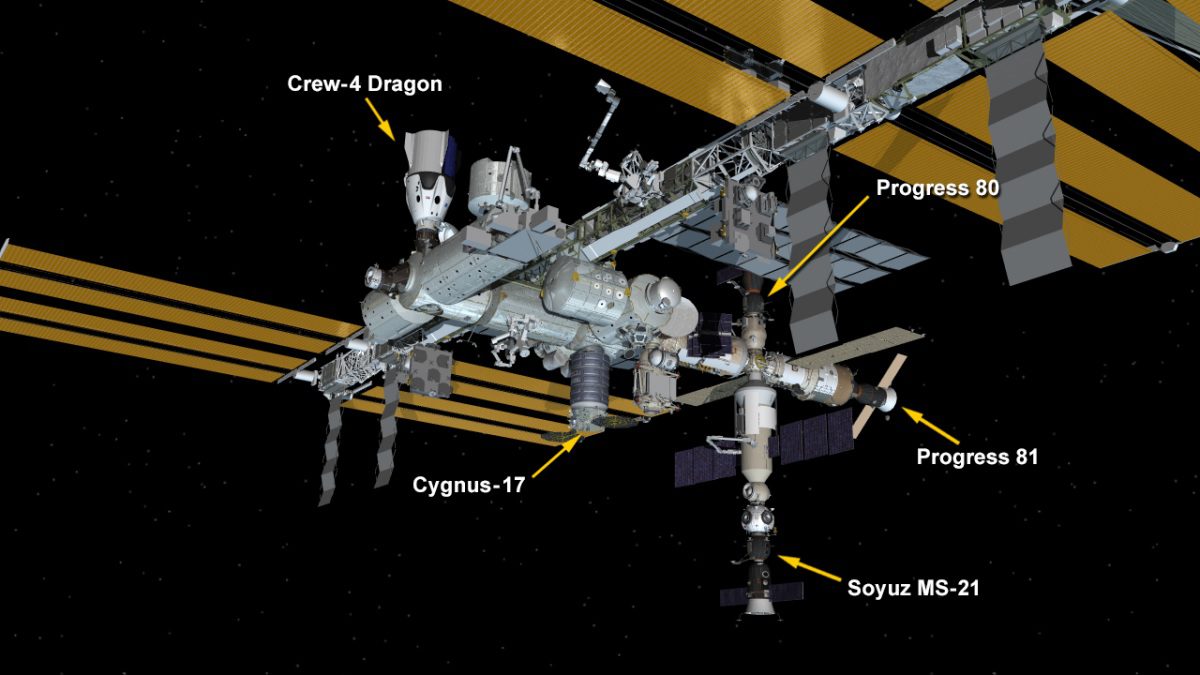An attempt to raise the orbit of the International Space Station (ISS) using a rocket engine on the attached Cygnus NG-17 (Piers Sellars) cargo freighter spacecraft failed at 1520 GMT on 20 June. The spacecraft, which had been docked at the Earth-facing port of the ISS’s Unity module since 21 February, was scheduled to fire its engine for five minutes, 1 second to test the cargo craft’s ability to boost the ISS. However, the engine burned for only five seconds before it was shut down. Currently, the ISS is boosted either via its own engines or using Russian Progress spacecraft engine firings.
As an example, on 16 June at 1903 GMT Progress MS-20, which was docked at the station’s Zvezda module aft port, fired its engines for 274 seconds in a ‘Pre-Determined Debris Avoidance Maneuver’ (PDAM) to distance the ISS from the predicted track of a fragment of Cosmos 1408 debris, created during an ASAT missile test interception. It was predicted that the space debris would have passed within half a mile of the ISS without the orbital position manoeuvre.
Update on 27 June 2022: On 25 June, Cygnus NG-17 finally succeeded in raising itself and the ISS with a burn of its gimbaled delta velocity engine for five minutes, 1 second that slightly lifted the station’s altitude.
Update on 30 June 2022: Cygnus NG-17 was unberthed from the Unity module and released into orbit at 1107 GMT on 28 June. It re-entered over the Pacific on 29 June.








